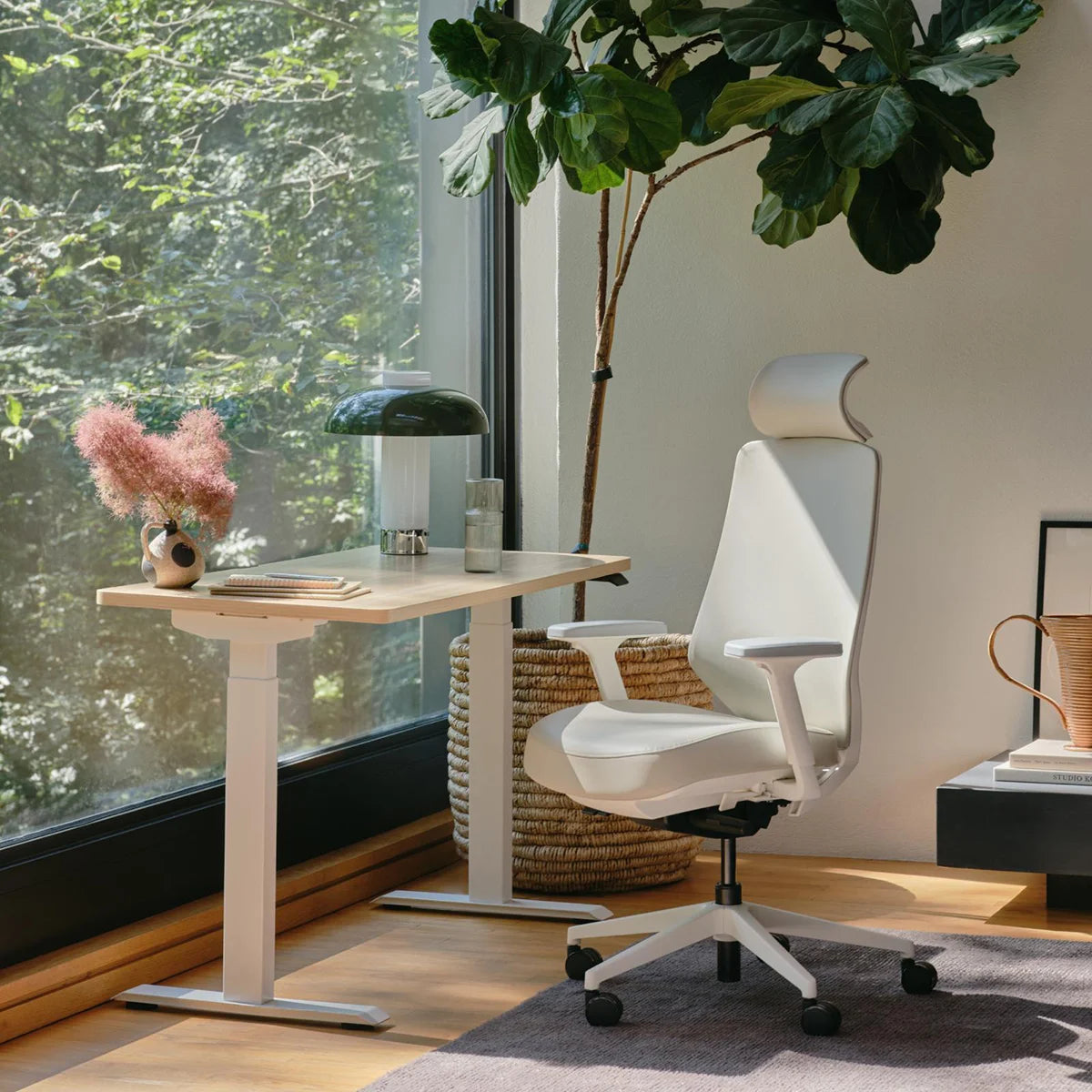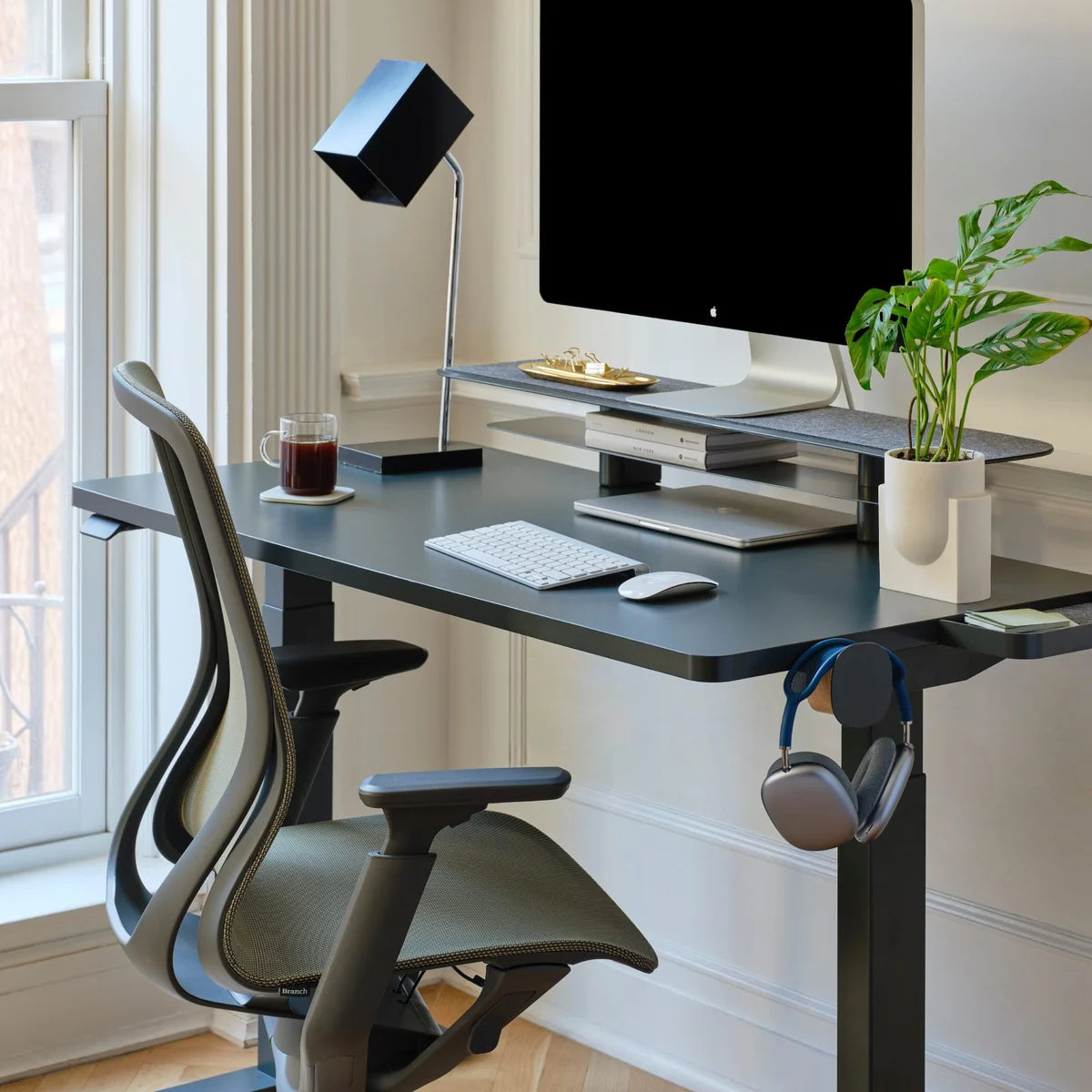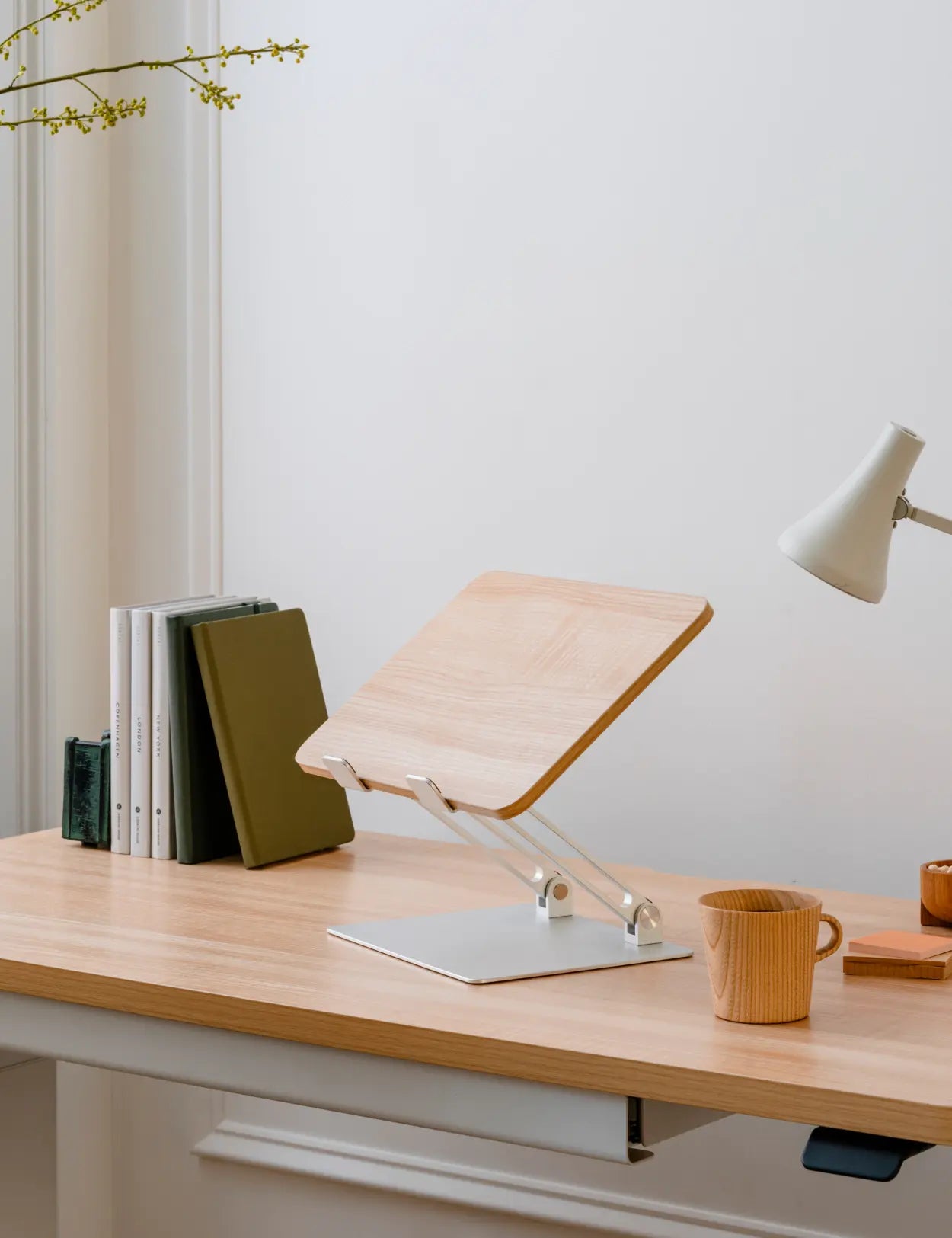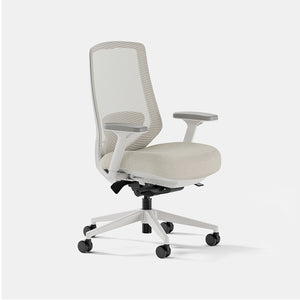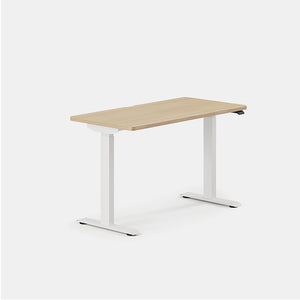It can be difficult to determine whether you should be standing more, or even sitting more, while you work. We're here to help you find the right balance, which is key to a productive workday.
If you have a desk job, you may understand what it's like to deal with neck and back pain after a long workday. Most office workers spend four to five days a week dealing with stiff and aching muscles, and it can begin to seem inevitable.
However, if you understand the benefits of standing vs. sitting at your desk, you can find a balance to keep good posture and combat the side effects of a sedentary lifestyle. This guide will break down the debate between standing vs. sitting in a work environment.
Then, we'll look at the benefits of rotating between standing and sitting so you can make the most out of both.





